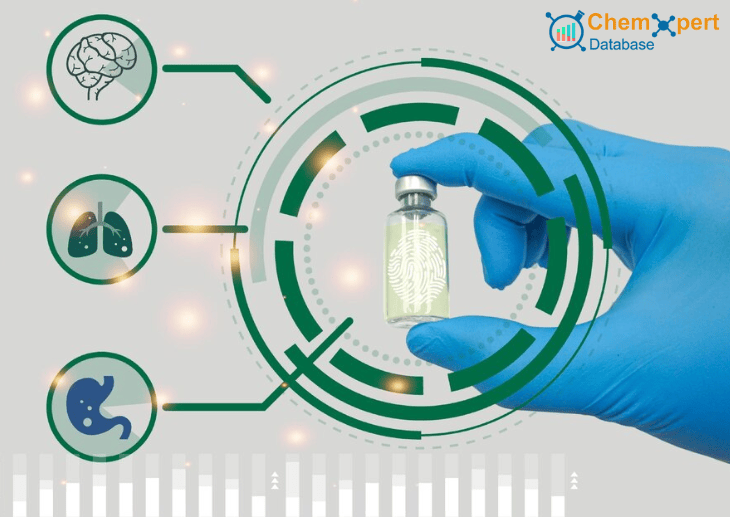
In recent years, significant progress has been made in the area of regenerative medicine with a particular focus on finding new sources of stem cells that can be used to treat diseases. Among these sources, menstrual blood derived stem cells (MenSCs) are emerging as a promising option, offering distinct advantages for medical applications. MenSCs, a rather new discovery, may have great potential for transforming regeneration therapy. They are derived from menstrual blood, a unique source of stem cells that is noninvasive and easily accessible. We're going to explore the fascinating world of MenSCs, looking at their therapeutic mechanisms, novel strategies, and global market size in this blog.
There are a lot of stem cells, with remarkable regenerative properties, in the uterine blood that is typically disposed of as waste. Men's stem cells are mesenchymal stem cells, which are found in menstrual fluid, which is excreted during menstruation. These stem cells are capable of maintaining their own regenerative capacity and differentiating into a variety of cell types, such as bone, adipose tissue, chondrocartilage, muscles and tendons. They are an appealing alternative to conventional sources of stem cells, such as bone marrow or fat tissue, owing to their abundance, no invasive collection method and high production capacity.
MenSCs have the potential to treat a wide variety of diseases, even those which are not limited to:
1. Regenerative Medicine: In conditions such as cardiovascular disease, neurodegenerative disorders, orthopedic injuries and wound healing, men's spinal cord stimulators have been shown to be promising for tissue repair and regeneration.
2. Immunomodulation: These stem cells have immunomodulatory properties, making them valuable for the treatment of autoimmune diseases, graft versus host disease, GVHD and inflammatory disorders.
3. Reproductive Health: MenSCs have applications in the treatment of gynecological disorders, such as endometriosis, uterine fibroids, etc.
4. Drug Discovery and Development: MenSCs cells can be a valuable tool for pharma research, assisting in drug screening, toxicity testing and disease modelling.
The potential of MenSCs has been recognized by the pharmaceutical industry. The world market for stem cells was valued at USD 15.07 billion in 2023, and is expected to be worth USD 56.15 billion by 2032, with a remarkable compound annual growth rate of 16.1% from now on. This growth is largely due to the contribution of MenSCs, which are attracting attention from researchers as well as investors. (Courtesy: Fortune Business Insights)
Researchers are studying techniques for editing gene sequences with a view to improving the characteristics of MenSC. CRISPR Cas9 enables precise genetic modification, which may result in more effective treatment.
Exosomes derived from MenSCs offer a cell free alternative for regenerative medicine. These small vesicles carry the bioactive molecules, which are used to repair tissues in a way that does not involve transplantation of cells directly.
The understanding of the heterogeneity of MenSCs at a level of one cell makes it possible to tailor treatment according to each patient. The efficacy and safety of this personalized approach are increased.
Targeted and sustained release of therapeutic agents is promised by innovations in MenSC based drug delivery systems. The outcome of treatment is optimized by these platforms.
Their survival and function are ensured by the creation of an enabling microenvironment for MenSCs. In order to increase the regenerative potential, researchers are exploring the use of niche engineering.
The use of MenSC in the discovery and development of drugs represents a major opportunity for the pharmaceutical industry. Pharmaceutical companies can improve the effectiveness and precision of preparative studies by incorporating Mensch in drug databases and screening platforms. Compared to traditional cell lines or animal models, these stem cells offer a more physiologically relevant model for evaluating the efficacy, safety and pharmacokinetics of medicinal products. In addition, MenSCs allow for the study of gender particular responses to medicinal products and address an important aspect which has been largely ignored in preclinical studies.
It is important to determine the average age of MenSC donors and their respective cell doses. Guidelines need to be developed by rigorous clinical studies.
For successfully concluding MenSC based treatments, it is essential to select the right route of administration such as intramuscular, intravenous, etc., and to also observe the long term effects.
The Chemxpert database is a one stop solution to disseminate important information on menstrual blood regeneration in order to bridge the gap of science research and pharma industry. The Chemxpert database provides a useful resource for promoting collaboration, research progress and finally contributing to the development of understanding and use of stem cells from menstrual blood.
The promising source of regenerative medicine, stem cells derived from menstrual blood. As we unravel their mechanisms and explore new strategies for the benefit of patients around the world, MenSC based therapies will continue to develop. There are great possibilities for the future, where MenSCs play an important role of healing and regeneration.

Sick and tired of always wondering if you are being asked to pay the right price for your APIs? This empowers you with the answers you need to make the right decisions in the Global API market.
Chemxpert Database is one of the biggest and most comprehensive directories of pharma and chemicals, manufacturers, suppliers and information. Provided with current information on prices, demand and transactions, it gives you instant feedback on whether you are buying what is right and at the right time.
Start using market intelligence today and allow yourself to be in control in the API market.
Check it out today and make more informed sourcing decisions! Learn More!